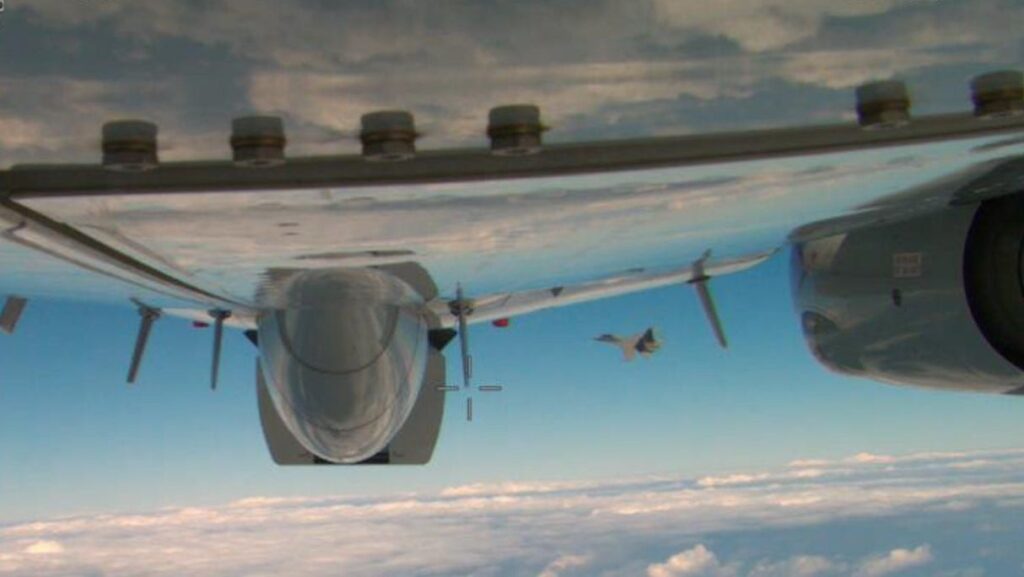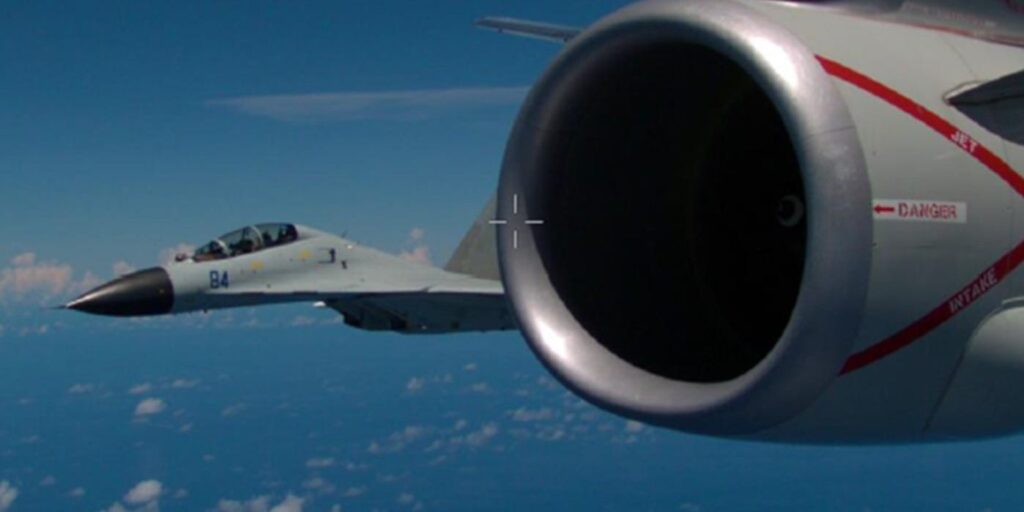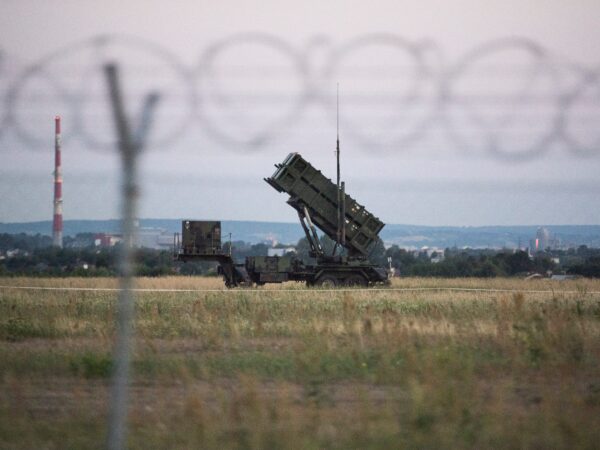- US officials are alarmed by a sharp increase in unsafe interactions with Chinese jets and ships.
- Close encounters raise the risk of an accident that could escalate to conflict, the officials say.
- For China, aggressive intercepts send a political message and have benefits for its own forces.
US officials are sounding the alarm about close calls with Chinese jets and warships, which they say are crowding and harassing US forces in the Western Pacific.
The US says those encounters are meant to force it and its allies to operate farther from China. For the Chinese pilots carrying them out, they are also part of a years-long effort to increase the complexity and value of their training through real-world interactions with a more experienced rival.
The US military said in October that it had documented more than 180 cases of "coercive and risky operational behavior" by Chinese forces since late 2021, including "reckless" maneuvers, approaching too rapidly or too close, or discharging chaff or flares close to US aircraft.
Those 180 incidents were more than had occurred in the previous decade and appeared to be part of "a centralized, concerted campaign to perform these risky behaviors in order to coerce a change" in the activity of the US and its allies, the Pentagon said in its most recent report on the Chinese military, released in November.

"This is coercive behavior. In certain instances this is quite dangerous behavior that could lead to crisis or inadvertent conflict," Ely Ratner, the assistant secretary of defense for Indo-Pacific security affairs, told reporters at a Defense Writers Group event this month.
Tensions between the US and China have risen in recent years, but Chinese thinking about the training value of encounters with rival forces dates back nearly a decade. A term for such an approach, "using the enemy to train the troops," has appeared in Chinese military sources since 2014, and official statements in early 2022 indicated that it had become part of military doctrine, according to Ryan Martinson and Conor Kennedy, researchers at the US Naval War College's China Maritime Studies Institute.
That approach was applied to China's undersea force and then the rest of its navy in the 2010s in response to what Beijing saw as provocative activity by the US military, especially patrols around the so-called first island chain, which includes Japan, Taiwan, and the Philippines, Martinson and Kennedy wrote for the Jamestown Foundation in 2022.
For China, "using the enemy to train the troops" has the benefits of being realistic and of testing its forces' ability to use their equipment in an encounter with a live opponent, allowing them to make observations about the strengths and weaknesses of both sides, Martinson and Kennedy wrote. Chinese officials also believe it aids their troops' "fighting spirit" and counteracts the "peace disease," a reference to their lack of combat experience since 1979.

The US has released extensive imagery of Chinese jets in close proximity to US aircraft to illustrate what it says is risky behavior, but the training value "comes from everything that leads up to the Chinese aircraft being so close to the US aircraft," Michael Dahm, a senior resident fellow at the Mitchell Institute for Aerospace Studies, told Business Insider.
During those intercepts, China's military is trying to determine the range at which US aircraft detect the Chinese jets, at what range they react to the approach, and how they do so, added Dahm, a retired US Navy intelligence officer whose career included a tour as an assistant naval attaché in Beijing.
"When the Chinese fighter aircraft are given vectors by their airborne or ground controllers, at what range could the Chinese fighter radar detect a US reconnaissance aircraft or a stealth aircraft like the F-35? What indications or electronic signals did the Chinese aircraft pick up on their approach?" Dahm said.
"The end result is a US airman looking out the window and seeing a J-15 or a J-16 too close to their wing, and that is concerning," Dahm added. "But everything that led up to that moment represents the real training value for the PLA Air Force."

Gen. Mark Kelly, who oversees the training of US Air Force combat units as head of Air Combat Command, has also highlighted the increase of encounters with Chinese aircraft and the training motive behind that behavior.
"Five years ago we were not having our fighters interact with Chinese fighters on a routine basis in exercises," Kelly told reporters at the Air and Space Forces Association conference in September.
Kelly said China, like its close partner Russia, is trying to mount "a direct challenge" to the US-led international order, and on an operational level, "they want batting practice against the best in the world" and "they feel pretty confident they can compete in this arena."
Chinese leaders know that "using the enemy to train the troops" has risks — including of what a Chinese navy surface warfare officer called "inadvertent armed clash" — and some Chinese officials have outlined ways to apply it while avoiding "friction and conflict," Martinson and Kennedy wrote last year.

But the political motive behind the more confrontational approach means China is unlikely to change course.
Experts say conducting provocative actions at a time when Beijing has cut off most military-to-military communication with the US is an effort to raise the stakes and force Washington to back down from it activity in the Western Pacific, which US officials say is lawful but which China views as part of what Chinese leader Xi Jinping has described as part of "all-round containment, encirclement, and suppression against us."
During a meeting in California in November, Xi and President Joe Biden agreed to resume those communications, and Ratner said this month that the two sides were working on the schedule and sequencing of future talks.
Biden and Xi "signaled a willingness on both sides to renew military-to-military engagements," and the Pentagon is "in the process of discussing" with China "the combination of what will be meetings, calls, dialogues, and engagements over the next 12 months," Ratner said.










